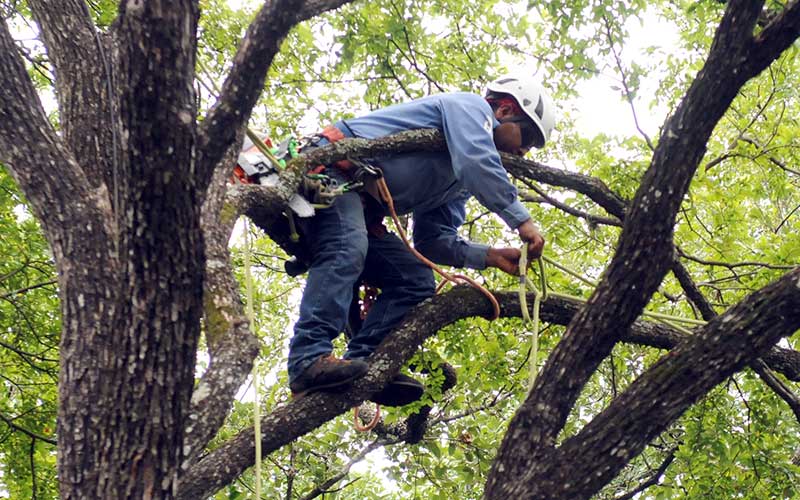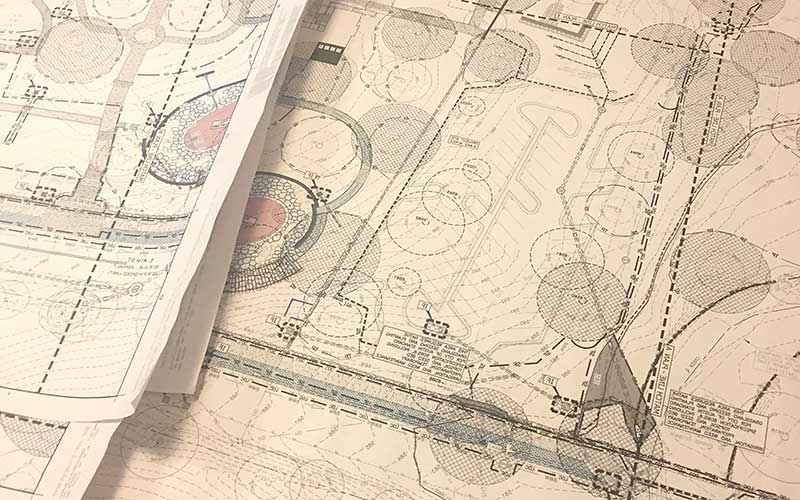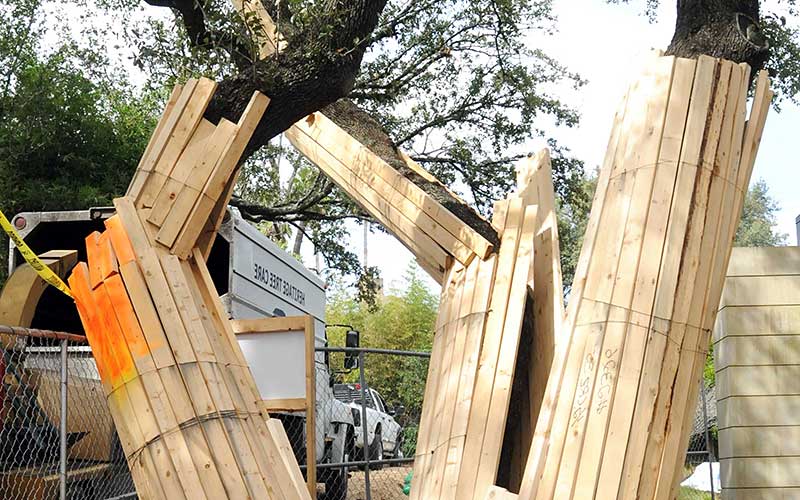Trees planted in heavily populated areas face challenging environmental conditions, such as urban heat island effects, air pollution, compacted soils, high pH, and poor drainage. To keep our trees healthy, we should carefully keep their soil healthy and provide enough moisture with regular tree watering.
Water is Essential for Tree Survival and Growth
Trees use water during photosynthesis and lose water during transpiration. Therefore, drought conditions can lead to tree decline, making the tree more susceptible to pest problems.
Depending on your tree’s growing conditions, it may need supplemental watering, especially during dry periods and hot weather. Mandated watering restrictions could shock your trees if they have been conditioned to expect frequent watering.
When considering which plants to water, it is important to consider that just because trees are big doesn’t mean they can tolerate changes in their water schedule. It takes a long to replace a mature tree if it dies.
Many people in Central Texas aren’t sure how often they should water their trees or how much water trees need to remain healthy. Over 95% of issues with new trees are related to improper watering.
Frequently Asked Questions About Tree Watering in Central Texas
1. Do all trees in the Austin area need the same amount of water?
All newly planted trees require supplemental water for the first few years. However, after that period, native and adapted trees will need much less water than those ill-suited for the climate of Central Texas.
The City of Austin has provided an excellent booklet you can read online; Native and Adapted Landscape Plants: an Earthwise Guide for Central Texas. It rates the plants listed depending on their water requirements.
To preserve our water supply while creating a beautiful landscape, avoid trees with high water requirements unless you are planting it next to a waterway. Also, protect any trees that may grow naturally on your property; their roots are broader and deeper, so they are the most drought-resistant.
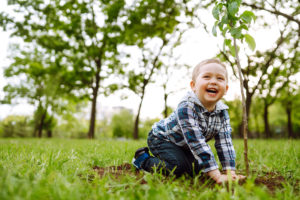 2. How often should I water a newly planted tree, and how much water does it need?
2. How often should I water a newly planted tree, and how much water does it need?
It takes time to establish new roots when a tree is transplanted. These roots can die if we keep them too wet or too dry—they need just right soil. Hopefully, you planted your new tree in the winter or early spring to allow it to establish new roots before the heat of summer.
Water it three times each week during the first month after planting, two times a week during the second month, and once a week thereafter for the first few years. Increase the frequency again during summertime.
How much water? At the minimum, it needs two to three gallons for each inch of the trunk’s diameter. So, a young tree three inches around should receive at least nine gallons of water at each of its three waterings.
Are you watering with a hose? Check your watch to see how long it takes to fill a five-gallon bucket. One minute? Two? Now you know how long to water your tree.
Adjust your watering schedule based on the rainfall and temperature.
3. How much water does an established tree need?
An older tree has more roots and can go longer before it needs to be irrigated. Still, during dry, hot weather, most trees need supplemental water.
The City of Austin’s Native and Adapted Plants booklet provides these guidelines, depending on your tree’s species:
Very Low; water occasionally, if there is no significant rainfall for 30 days.
Low; water thoroughly every 3-4 weeks if there is no significant rainfall.
Medium; water deeply every 2-3 weeks if there is no significant rainfall.
High; water thoroughly every 5-7 days if it doesn’t rain.
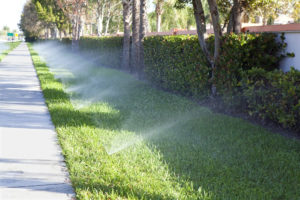 4. Will a tree surrounded by a lawn get enough water from the sprinklers?
4. Will a tree surrounded by a lawn get enough water from the sprinklers?
Most lawn watering schedules are too frequent and not deep enough for a tree’s water needs. Many trees watered this way grow shallow roots that affect it’s sensitivity to drought, especially if watering restrictions are put in place, and the watering schedule changes.
Ideally, you should remove the grass under the tree’s canopy or give the trees occasional deep watering.
5. Should I water my trees in the winter?
Once the heat of Central Texas summer lessens, you can reduce your irrigation. During the cooler months, November through March, check your soil and water when needed if less than two inches of rain falls in a month.
6. How can I tell if my tree needs water?
Heritage Tree Care arborists urge everyone to manually check their soil moisture levels occasionally. Even an automatic irrigation system can fail, so you need to assess the moisture and observe your trees.
The goal is to irrigate before the soil is dry and the tree shows signs of stress, such as leaf curl and falling leaves. The Texas Forest Service suggests using the ‘screwdriver test’. Take a long metal screwdriver and push it into the soil within the tree’s drip line. It should slide into the ground easily to six to eight inches. If not, water.
7. What is the best time of day for tree watering?
To prevent evaporation, the best time to water trees is in the early morning. Watering at night is also an option, however, continued night watering can increase the trees’ susceptibility to some diseases.
8. How can I conserve water while watering my trees?
Drip irrigation is the best option to direct moisture to the roots without wasting water. Read this article, Drip Irrigation: Salvation for the Gardener, by Texas AgriLife Extension Service, or contact a local sprinkler company for a quote. You’ll be pleased by how well your trees will do with a consistent moisture supply.
Other options include soaker hoses, a garden hose, or a sprinkler. Be sure to water out to the edge of the tree’s drip line. The goal is to provide water to a depth of twelve to eighteen inches, where most feeder roots are found. Mulching with shredded bark mulch will also prevent evaporation and conserve water.
To increase rainwater infiltration on your property, and provide passive tree watering, installation of berms and swales or rain gardens are a good option.
To save water while protecting the health of your trees, check the soil moisture before irrigating, water deeply to encourage root growth, and prevent overflow.
Caring for the Trees of Central Texas
From the limestone soils of the Hill Country to the deep clay of Austin’s east side, the arborists at Heritage Tree Care understand the soils and conditions of Central Texas. If you need help establishing an optimum tree watering schedule for your valuable trees, schedule a consultation today and enjoy the benefits for years to come.

